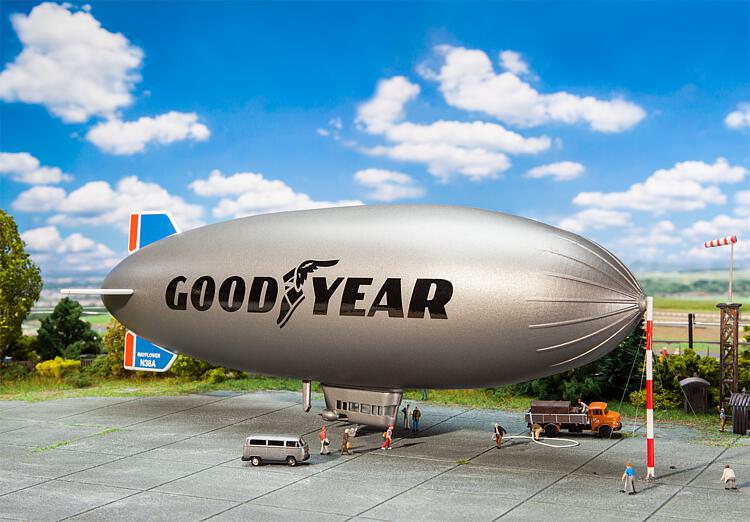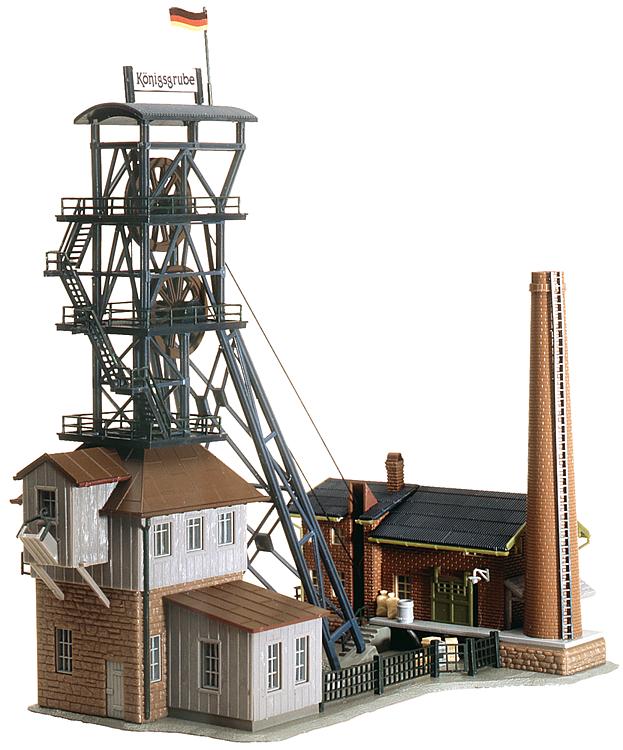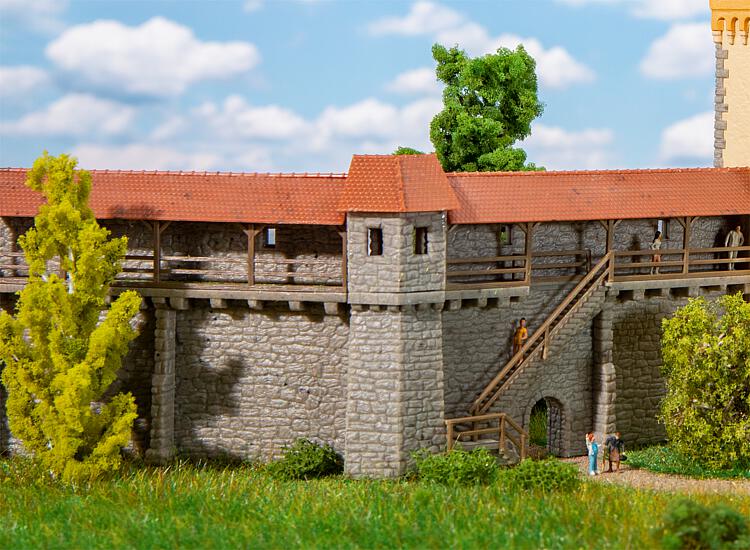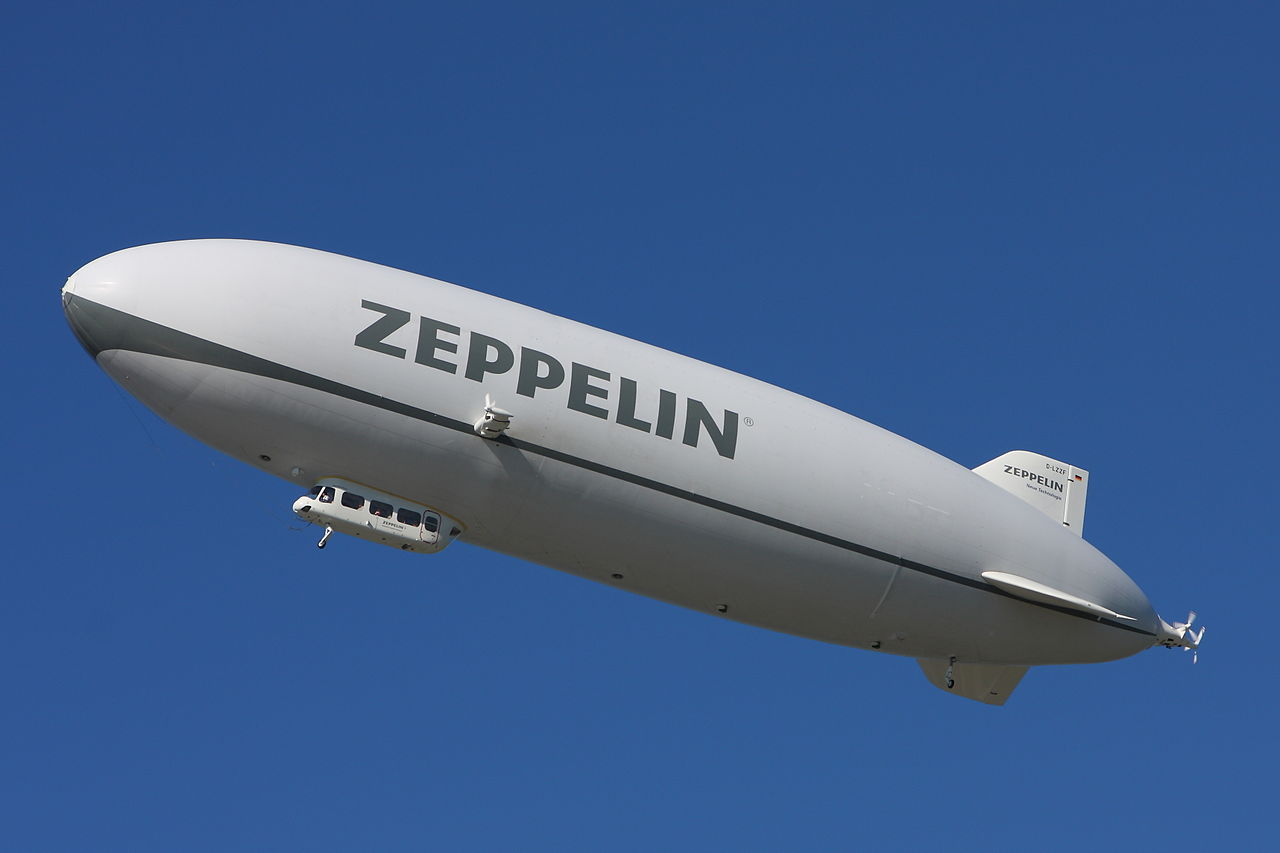Specific Item Information: Good luck! Model of a blimp type »GZ-20a« from the legendary Goodyear fleet, with grey gondola and grey hull featuring the »Goodyear« logotype as well as blue stabilizing fins.
This building kit contains: 25 single parts in 2 colours, window foil, 1 decoration and 1 construction instruction.
This building kit contains: 25 single parts in 2 colours, window foil, 1 decoration and 1 construction instruction.
Prototype History: An airship or dirigible balloon is a type of aerostat or lighter-than-air aircraft that can navigate through the air under its own power. Aerostats gain their lift from a lifting gas that is less dense than the surrounding air.
In early dirigibles the lifting gas used was hydrogen, due to its high lifting capacity and ready availability. Helium gas has almost the same lifting capacity and is not flammable, unlike hydrogen, but is rare and relatively expensive. Significant amounts were first discovered in the United States and for a while helium was only used for airships in that country. Most airships built since the 1960s have used helium, though some have used hot air.
The envelope of an airship may form the gasbag, or it may contain a number of gas-filled cells. An airship also has engines, crew, and optionally also payload accommodation, typically housed in one or more gondolas suspended below the envelope.
The main types of airship are non-rigid, semi-rigid, and rigid. Non-rigid airships, often called "blimps", rely on internal pressure to maintain their shape. Semi-rigid airships maintain the envelope shape by internal pressure, but have some form of supporting structure, such as a fixed keel, attached to it. Rigid airships have an outer structural framework that maintains the shape and carries all structural loads, while the lifting gas is contained in one or more internal gasbags or cells.Rigid airships were first flown by Count Zeppelin and the vast majority of rigid airships built were manufactured by the firm he founded, Luftschiffbau Zeppelin. As a result, rigid airships are often called zeppelins.
Airships were the first aircraft capable of controlled powered flight, and were most commonly used before the 1940s; their use decreased as their capabilities were surpassed by those of aeroplanes. Their decline was accelerated by a series of high-profile accidents, including the 1930 crash and burning of the British R101 in France, the 1933 and 1935 storm-related crashes of the twin airborne aircraft carrier U.S. Navy helium-filled rigids, the USS Akron and USS Macon respectively, and the 1937 burning of the German hydrogen-filled Hindenburg. From the 1960s, helium airships have been used where the ability to hover for a long time outweighs the need for speed and manoeuvrability, such as advertising, tourism, camera platforms, geological surveys and aerial observation.
In early dirigibles the lifting gas used was hydrogen, due to its high lifting capacity and ready availability. Helium gas has almost the same lifting capacity and is not flammable, unlike hydrogen, but is rare and relatively expensive. Significant amounts were first discovered in the United States and for a while helium was only used for airships in that country. Most airships built since the 1960s have used helium, though some have used hot air.
The envelope of an airship may form the gasbag, or it may contain a number of gas-filled cells. An airship also has engines, crew, and optionally also payload accommodation, typically housed in one or more gondolas suspended below the envelope.
The main types of airship are non-rigid, semi-rigid, and rigid. Non-rigid airships, often called "blimps", rely on internal pressure to maintain their shape. Semi-rigid airships maintain the envelope shape by internal pressure, but have some form of supporting structure, such as a fixed keel, attached to it. Rigid airships have an outer structural framework that maintains the shape and carries all structural loads, while the lifting gas is contained in one or more internal gasbags or cells.Rigid airships were first flown by Count Zeppelin and the vast majority of rigid airships built were manufactured by the firm he founded, Luftschiffbau Zeppelin. As a result, rigid airships are often called zeppelins.
Airships were the first aircraft capable of controlled powered flight, and were most commonly used before the 1940s; their use decreased as their capabilities were surpassed by those of aeroplanes. Their decline was accelerated by a series of high-profile accidents, including the 1930 crash and burning of the British R101 in France, the 1933 and 1935 storm-related crashes of the twin airborne aircraft carrier U.S. Navy helium-filled rigids, the USS Akron and USS Macon respectively, and the 1937 burning of the German hydrogen-filled Hindenburg. From the 1960s, helium airships have been used where the ability to hover for a long time outweighs the need for speed and manoeuvrability, such as advertising, tourism, camera platforms, geological surveys and aerial observation.
Road Name History: The Goodyear Tire & Rubber Company is an American multinational tire manufacturing company founded in 1898 by Frank Seiberling and based in Akron, Ohio. Goodyear manufactures tires for automobiles, commercial trucks, light trucks, motorcycles, SUVs, race cars, airplanes, farm equipment and heavy earth-moving machinery. It also makes bicycle tires, having returned from a break in production between 1976 and 2015. As of 2017, Goodyear is one of the top five tire manufacturers along with Bridgestone (Japan), Michelin (France), Continental (Germany) and MRF (India).
Brand/Importer Information: Faller is a German toy company founded in Stuttgart in 1946 by brothers Edwin and Hermann Faller. The company later relocated to the brothers' home town of Gütenbach in the Black Forest.
Faller now specializes in making scenery, plastic model kits and other accessories for model railroads but has manufactured a range of toys during its history, such as model aeroplane kits, the Auto Motor Sport (AMS) slot car racing sets and die-cast model cars. Their modern product line includes railway structures, houses and commercial buildings, bridges, amusement rides and terrain accessories in H0, N, TT and Z scales, as well as the Car System. Since 1997 Faller also owns the Pola brand, which is now solely devoted to G scale structures.
Faller's older toys and models can be highly collectable today, together with their early product catalogues.
From Wikipedia
Faller now specializes in making scenery, plastic model kits and other accessories for model railroads but has manufactured a range of toys during its history, such as model aeroplane kits, the Auto Motor Sport (AMS) slot car racing sets and die-cast model cars. Their modern product line includes railway structures, houses and commercial buildings, bridges, amusement rides and terrain accessories in H0, N, TT and Z scales, as well as the Car System. Since 1997 Faller also owns the Pola brand, which is now solely devoted to G scale structures.
Faller's older toys and models can be highly collectable today, together with their early product catalogues.
From Wikipedia
Item created by: CNW400 on 2020-09-22 19:54:02. Last edited by CNW400 on 2020-09-22 19:54:03
If you see errors or missing data in this entry, please feel free to log in and edit it. Anyone with a Gmail account can log in instantly.
If you see errors or missing data in this entry, please feel free to log in and edit it. Anyone with a Gmail account can log in instantly.












